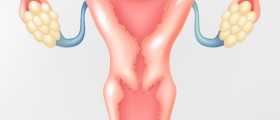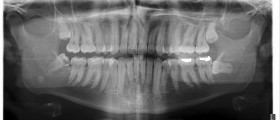
Ovarian cysts are defined as a collection of fluid surrounded by a very thin wall, located within an ovary. This means that any ovarian follicle larger than 2 centimeters can be described as an ovarian cyst. The cysts can be very small, sized like a pea, or very large, even larger than an orange. The cysts are usually benign and found in almost all premenstrual women. However, the cysts affect the women of all ages. Most of the cysts do not cause any kind of problem but for some women, they are a reason behind many unpleasant symptoms.
Symptoms of ovarian cysts
Most commonly ovarian cysts manifest in irregular menstrual symptoms accompanied by nausea, vomiting or breast tenderness. Patients may also complain about pelvic pain shortly before the period begins or just before it ends. Pelvic pain during the intercourse is also very common, as well as during the bowel movements. Women may also have a feeling of fullness in the abdomen or pressure on the rectum or bladder.
Types of ovarian cysts
Before making a final diagnose and planning the treatment of ovarian cysts, doctors will tend to determine what kind of cysts the patient has. Functional Cysts are the most common variety of ovarian cysts. These cysts develop in the normal process of menstruation and usually do not cause any problems. These cysts will probably disappear without any treatment within a couple of weeks.
Graafian Follicle Cysts also very common types of cysts that develop rapidly and grow for a short time. These cysts are usually associated with mild or more severe pain, but the symptoms do not tend to last for a long time.
The Corpus Luteum Cyst is a cyst that is larger than the previously mentioned follicle cyst. These are usually very mild but women may feel the abdominal pain and the lack of energy while the cyst is recessing.
Hemorrhagic Cyst is one of the most painful types of ovarian cysts. It is also known under the name “blood cyst”. This cyst develops when blood vessel ruptures and drains the blood into the fluid already collected in the cyst.
Endometrial Cyst develops due to the presence of endometriosis. Endometriosis is a gynecological medical condition in which endometrial-like cells appear and flourish in the areas outside the uterine cavity. While this cyst grows women may experience abdominal pain, vaginal bleeding, headaches, aches and pains.
Dermoid Ovarian Cyst contains developmentally mature skin, hair follicles and sweat glands. These cysts are usually benign.
Pathological Cyst is the most severe type of cysts, very large and associated with the greatest risk of developing into a malignancy. These cysts are treated using the surgical procedure in which the cysts are completely removed.

















Your thoughts on this
Loading...